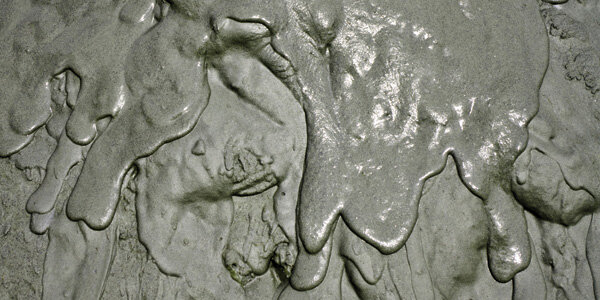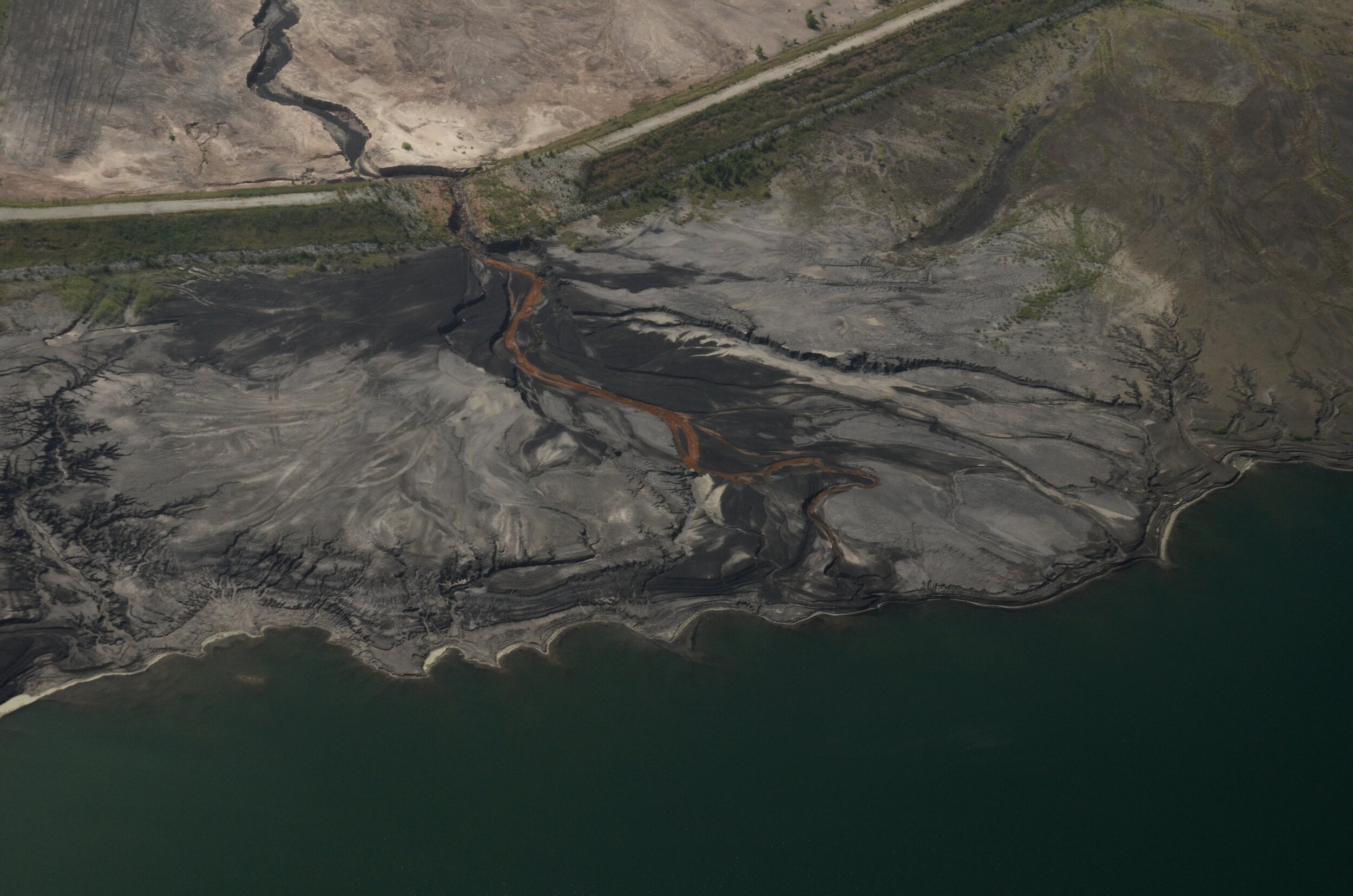
Coal Ash & Why It Matters
What is Coal Ash?
Coal ash, also known as coal combustion residuals (CCRs), is the toxic ash left behind from burning coal.
Coal ash contains toxic contaminants including: [Hg] mercury, [Cd] cadmium, [Cr] chromium, [As] arsenic, and several other toxic chemicals.
Without proper containment, coal ash can pollute waterways, groundwater, drinking water, and the air.
*Research shows that Georgia Power is unsafely storing 92 million tons of coal ash in unlined pits at 12 of their 13 coal plant sites, polluting the rivers and groundwater of nearby communities.
*Source: Georgia at a Crossroads: Groundwater Contamination From Coal Ash Threatens the Peach State Report
Georgia Power’s coal ash is leaching toxins into Georgia’s waterways, polluting local communities, triggering serious health problems.
Health Impacts of Coal Ash
Coal ash is full of chemicals that cause cancer, developmental disorders, reproductive problems, and many other health problems…
Al ALUMINUM Long-term exposure to dust can cause scarring of lungs (pulmonary fibrosis) with symptoms of cough and shortness of breath. May be linked to dementia.
Sb ANTIMONY Long-term inhalation can cause a hole in the septum dividing the inner nose and lead to permanent lung damage. May harm female fertility and damage liver, kidneys and heart.
As ARSENIC Ingestion can lead to nervous system damage, cardiovascular harm, and urinary tract cancers. Inhalation and absorption through skin can cause lung cancer and skin cancer, respectively.
B BORON Inhalation can lead over the short term to eye, nose, and throat irritation. Ingestion of large amounts can result in damage to the testes, intestines, liver, kidneys, and brain, and eventually lead to death.
Cd CADMIUM May cause lung and prostate cancer and damage the reproductive system. Inhalation can irritate lungs. Ingestion can cause nausea, vomiting, diarrhea and abdominal pain.
Cr CHROMIUM Ingestion can cause stomach and intestinal ulcers, anemia, and stomach cancer. Frequent inhalation can cause asthma, wheezing, and lung cancer. Inhalation can also irritate the nose and throat, resulting in asthma-like symptoms and damage the nose’s septum.
Pb LEAD Exposure can result in brain swelling, kidney disease, cardiovascular problems, nervous system damage, and death. It is accepted that there is no safe level of lead exposure, particularly for children.
Mn MANGANESE Long-term exposure can cause permanent brain damage. Inhalation irritates nose, throat and lungs, causing coughing, wheezing and shortness of breath. May cause harm to the liver and testes and decrease fertility in males.
The Coal Ash Periodic Table of Illness:
Hg MERCURY Impacts include nervous system damage and developmental harm, such as reduced IQ. Poses particular risk to children, infants and fetuses.
Mo MOLYBDENUM Ingestion causes gout (joint pain) and increased blood uric acid levels and is linked to high blood pressure and liver disease. Slowed growth, low birth weight and infertility found in animals.
Ni NICKEL Inhalation can irritate and damage the nose, throat and lungs. Acute exposure can cause headache, dizziness, nausea and vomiting. A probable carcinogen for lung cancer. Can cause chronic bronchitis and scarring of the lungs. Long-term exposure may harm liver and kidneys.
PM2.5 PARTICULATE MATTER less than 2.5mm can lodge deep in the lungs and cause premature death, as well as lung and heart disease, decreased lung function, asthma attacks, heart attacks and cardiac arrhythmia.
Se SELENIUM Inhalation can irritate the nose, throat, and lungs, causing coughing, wheezing, and shortness of breath. Can also cause nausea, diarrhea, abdominal pain, and headache. Repeated exposure can cause irritability, fatigue, dental cavities, loss of nails and hair, and depression.
Tl THALLIUM Ingestion causes nervous system damage and lung, heart, liver and kidney problems. Main ingredient in rat poison.
Va VANADIUM Lung irritant. Long-term exposure can cause asthma attacks with shortness of breath, wheezing, cough, and chest tightness. May damage the kidneys. Repeated high exposure may cause anemia.
Zn ZINC Inhalation can irritate the nose and throat, and cause wheezing and coughing. Appears to affect the male reproductive system, including sperm count.
For more detailed information on the health impacts of toxic coal ash, please refer to these reports:
Coal Ash: The Toxic Threat to our Health and Environment | Physicians for Social Responsibility & Earthjustice
Ash in Lungs: How Breathing Coal Ash is Hazardous to Your Health | Physicians for Social Responsibility & Earthjustice
Selling Our Health Down the River | Physicians for Social Responsibility, Environmental Integrity Project, Sierra Club, Earthjustice, & Clean Water Action
Coal’s Assault on Human Health | Physicians for Social Responsibility
At 12 of Georgia Power’s 13 coal plant sites, toxic chemicals from coal ash have been leaching into Georgia’s waterways for decades…
Cleaning Up Georgia Power’s Coal Ash
Georgia Power is required by law to clean up and contain their massive amounts of toxic coal ash, and the corporate utility wants to pass the coal ash clean costs to its customers.
Georgia Power and its shareholders need to pay their fair share for the problem they knowingly caused for decades.
It will cost upwards of $8 billion to remediate all of the coal ash in Georgia but that shouldn’t be the responsibility of electricity consumers.
There are two options to contain coal ash:
✘ Cap In Place:
Unlined Coal Ash Covered Up In Place
- Water is pumped out of a coal ash pond and the remaining coal ash is left onsite in an unlined pit.
- The coal ash pit is only capped with a tarp over the top. This allows rain and groundwater to infiltrate in from below and on the sides.
- The capped pit may fail over time if constructed improperly or if vegetation fails to grow on top as designed.
- When water infiltrates into an unlined or failed pit, toxins from the coal ash are drawn out and flow into the groundwater and rivers nearby.
VS
✔ Excavate:
Coal Ash Moved to Lined Landfill
- Water is pumped out of a coal ash pond, but all the remaining coal ash is excavated from the site.
- The coal ash is transported for lined storage to offsite landfills or onsite the coal plant at a safe distance from any rivers or water sources.
- After being moved, the coal ash is placed in a lined, dried, and capped landfill designed for safe long term containment.
- Containing ash in lined landfills stops coal ash from being exposed to water and prevents it from contaminating our groundwater and rivers.
Although Excavation is the more expensive option in the short term, the long term health and environmental costs are severe -- permanent brain damage and forever-contaminated water are not worth saving a buck today.
Photo credit: Joe Cook via SouthWings
Georgia’s Big Decision on Coal Ash
In 2021, the Georgia Environmental Protection Division (GA EPD) will issue permits deciding how Georgia Power will contain the toxic coal ash at each of their coal plant sites.
Georgia EPD is the regulator agency tasked with ensuring that Georgia Power follows environmental laws and regulations and controls how the utility will clean up its coal ash.
Georgia Power requested that GA EPD permit them to cap in place the majority of their toxic coal ash - with no liner to protect Georgia’s groundwater and surrounding communities.
GA EPD will finalize permits, with public input, for each coal plant site deciding whether Georgia Power must excavate and line its coal ash or can cap it in place.
We must call on GA EPD to reject Georgia Power’s plans to pollute our water and demand that all coal ash be excavated to lined landfills!
Updated Georgia Coal Ash Permit Schedule
When GA EPD’s draft permits are released we expect there to be a 60-day public comment period for the public to speak out about each of the coal ash permits with at least one virtual hearing that we can attend.
Georgia Environmental Protection Division’s coal ash permiting process is currently underway.
We’ve collected the expected schedule for the upcoming cap in place permits we are challenging:
Georgia Coal Ash Permits Available at: epd.georgia.gov/public-announcements-0/coal-ash-information






